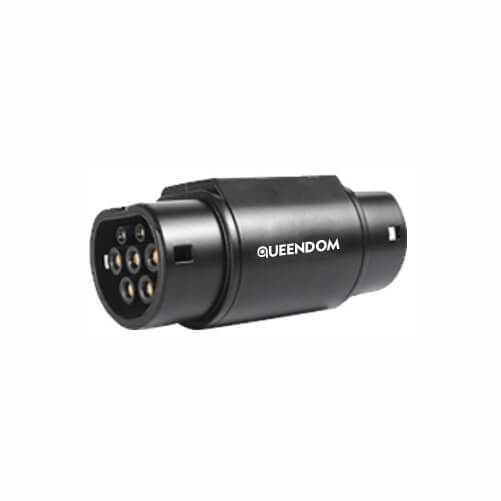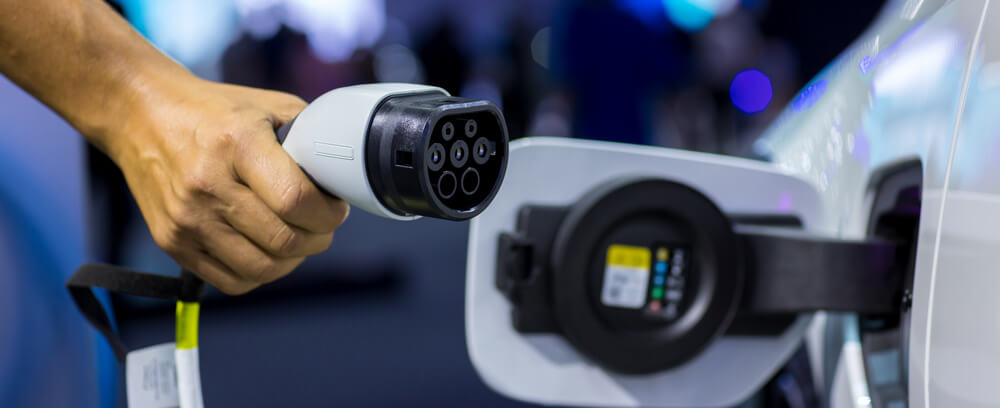Understanding the Electrical Socket Requirements for Electric Cars
Electric cars are becoming increasingly popular as people look for more environmentally friendly transportation options. However, charging these vehicles requires a different approach than refueling traditional gasoline-powered cars. One crucial aspect of charging an electric car is having the right socket. In this article, we will explore the various socket options available for electric car charging and discuss the importance of using the correct socket for effective and safe charging.
Choosing the Right Socket for your Electric Vehicle Charging Needs
When it comes to electric car charging, not all sockets are created equal. Depending on the make and model of your electric vehicle, you may require a specific socket type. It is crucial to choose the right socket to ensure compatibility and efficient charging. The two most common socket options for electric vehicle charging are the Type 1 and Type 2 sockets.
A Comprehensive Guide to Electric Car Sockets: Types and Compatibility
Type 1 sockets, also known as SAE J1772, are primarily used in North America and Japan. These sockets feature a five-pin configuration and are compatible with most electric cars on the market. On the other hand, Type 2 sockets, or IEC 62196 sockets, are prevalent in Europe. They have a seven-pin configuration and provide faster charging speeds compared to Type 1 sockets. It is essential to check your vehicle’s manual or consult with a professional to determine the socket type required for your electric car.
Decoding the Socket Jargon: What Socket is Required for Charging an Electric Car?
Understanding the various socket jargon can be overwhelming for electric car owners. The socket required for charging your electric car depends on factors such as the country you reside in, the make and model of your vehicle, and the charging infrastructure available. It is crucial to research and educate yourself about the different socket types and their compatibility with your electric car.
Exploring the Different Socket Options for Electric Vehicle Charging
In addition to Type 1 and Type 2 sockets, there are other socket options available for electric vehicle charging. These include CHAdeMO sockets, commonly used for fast charging, and Tesla’s proprietary Supercharger sockets. It is essential to consider the availability of charging stations that support these socket types when purchasing an electric car.
The Importance of Using the Correct Socket for Effective and Safe Electric Car Charging
Using the correct socket for electric car charging is crucial for both effective and safe charging. Improper socket selection can result in inefficient charging, damaged equipment, or even electrical hazards. It is important to consult with professionals or electric vehicle manufacturers to ensure you have the appropriate socket for your electric car.
Socket Selection 101: Finding the Perfect Socket for your Electric Vehicle Charging Station
When setting up an electric vehicle charging station at home or in a public space, selecting the perfect socket is essential. Factors such as charging speed, compatibility with different electric car models, and future-proofing the charging infrastructure should be considered. Consulting with experts in the field can help you select the most suitable socket for your charging station.
Navigating the Socket Maze: Which Socket is Best Suited for Your Electric Car?
With numerous socket options available, it can be challenging to determine which one is best suited for your electric car. Factors such as your location, charging infrastructure availability, and your electric car’s compatibility should be considered. It is recommended to consult with professionals or utilize online resources to make an informed decision.
Essential Socket Knowledge for Electric Car Owners: What You Need to Know
As an electric car owner, having essential socket knowledge is crucial. Understanding the different socket types, their compatibility with your vehicle, and the charging infrastructure in your area can help you make informed decisions regarding charging your electric car.
Understanding the Socket Infrastructure for Electric Car Charging: A Look into the Future
As the popularity of electric cars continues to rise, the socket infrastructure for charging these vehicles is expected to evolve. New socket types may emerge, and advancements in technology may lead to faster and more efficient charging options. Staying informed about the future developments in electric car charging can help electric car owners make informed decisions regarding socket selection.
In conclusion, selecting the right socket for electric car charging is essential for effective and safe charging. Understanding the different socket options available, their compatibility, and the charging infrastructure in your area can help you make informed decisions regarding socket selection for your electric vehicle.
1. Understanding the Electrical Socket Requirements for Electric Cars
Understanding the electrical socket requirements for electric cars is crucial for owners and potential buyers alike. The socket you need for an electric car will depend on the type of charging you plan to utilize. There are three commonly used charging levels for electric cars: Level 1, Level 2, and Level 3.
Level 1 charging, also known as trickle charging, is the slowest and simplest method. It requires a standard household electrical socket, commonly known as a 120-volt outlet. This type of charging typically provides around 2-5 miles of range per hour of charging time. While convenient for overnight charging at home, Level 1 charging is not suitable for rapid replenishment of a depleted battery.
Level 2 charging, on the other hand, requires a 240-volt electrical socket. This type of charging is significantly faster than Level 1 and is commonly installed at homes, workplaces, and public charging stations. Level 2 charging can provide around 10-60 miles of range per hour, depending on the electric vehicle and charging equipment used. Many electric vehicle owners opt for Level 2 charging due to its convenience and ability to charge the vehicle relatively quickly.
Level 3 charging, also known as DC fast charging, is the fastest charging option available for electric cars. It requires specialized equipment and high-power charging stations that are typically found at public charging stations or along major highways. Level 3 charging can provide up to 200 miles of range in as little as 30 minutes, making it ideal for long-distance travel or quick top-ups during a road trip.
In conclusion, the socket you need for an electric car depends on the charging level you plan to utilize. Level 1 charging requires a standard household electrical socket, Level 2 charging requires a 240-volt socket, and Level 3 charging requires specialized equipment and high-power charging stations. Understanding these socket requirements is essential for ensuring efficient and effective charging of electric vehicles.
2. Choosing the Right Socket for your Electric Vehicle Charging Needs
Choosing the right socket for your electric vehicle charging needs is crucial in ensuring a smooth and efficient charging experience. With the increasing popularity of electric cars, there are several options available in the market. One of the most common sockets used for electric vehicle charging is the Type 2 socket, also known as the Mennekes socket. This socket is widely used in Europe and is compatible with the majority of electric vehicle models. It provides a high charging capacity and is designed for both single-phase and three-phase charging. Another widely used socket is the CHAdeMO socket, which is commonly found in Japanese electric vehicle models. This socket allows for fast charging and is capable of delivering high power to the vehicle. Additionally, there is the CCS (Combined Charging System) socket, which is becoming increasingly popular in North America. It combines the features of the Type 2 socket and the CHAdeMO socket, allowing for both AC and DC charging. When choosing the right socket for your electric car, it is important to consider factors such as the charging speed, compatibility with your vehicle, and the availability of charging infrastructure in your area. It is also advisable to consult with a professional electrician or your car manufacturer to ensure that the socket you choose meets all the necessary safety standards and regulations.

3. A Comprehensive Guide to Electric Car Sockets: Types and Compatibility
When it comes to charging an electric car, having the right socket is crucial. Electric vehicles (EVs) require a specific type of socket to ensure a safe and efficient charging process. This comprehensive guide aims to provide an overview of the different types of electric car sockets and their compatibility.
1. Type 1 (SAE J1772): This socket is commonly used in North America and Japan. It features a five-pin connector and is compatible with most electric car models, including popular ones like the Nissan Leaf and Chevrolet Bolt. Type 1 sockets deliver power at a maximum rate of 7.4 kilowatts (kW), which is suitable for daily commuting and overnight charging.
2. Type 2 (IEC 62196-2): Type 2 sockets are widely used in Europe and are becoming increasingly common worldwide. They feature a seven-pin connector and offer a higher power output compared to Type 1 sockets. Type 2 sockets can deliver power at rates ranging from 3.7 kW to 22 kW, depending on the charging station’s capabilities and the electric vehicle’s onboard charger. This flexibility allows for faster charging times and is compatible with a wide range of electric car models.
3. CCS (Combined Charging System): CCS sockets combine the Type 2 socket with two additional high-power DC pins. This technology enables both AC and DC charging, providing compatibility with a broader range of electric vehicles. CCS sockets are capable of delivering power at rates of up to 350 kW, allowing for ultra-fast charging and reducing charging times significantly.
4. CHAdeMO: Developed by Japanese automakers, the CHAdeMO socket is primarily used by Nissan and Mitsubishi electric vehicles. It features a unique connector and supports high-power DC charging. CHAdeMO sockets can deliver power at rates of up to 62.5 kW, allowing for relatively fast charging times. However, it is important to note that not all electric car models are compatible with CHAdeMO sockets.
5. Tesla Supercharger: Tesla electric vehicles come with their proprietary charging network known as the Supercharger. Tesla Superchargers use a unique Tesla-specific connector, which is not compatible with other types of sockets. These Superchargers can deliver power at rates of up to 250 kW, allowing for rapid charging and long-distance travel. However, it is worth mentioning that Tesla vehicles also come with an adapter that allows them to charge at Type 2 sockets.
It is important to consider the type of socket required for your electric car and ensure its compatibility with the charging infrastructure available in your area. This will ensure a convenient and efficient charging experience for electric vehicle owners, further promoting the widespread adoption of electric transportation.


